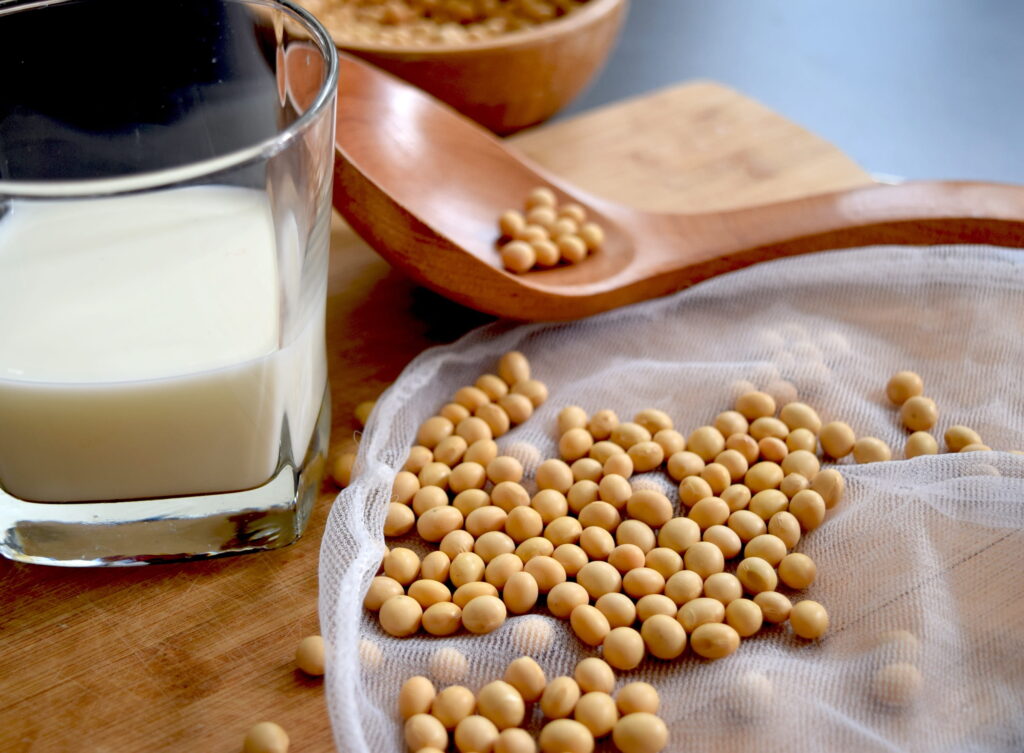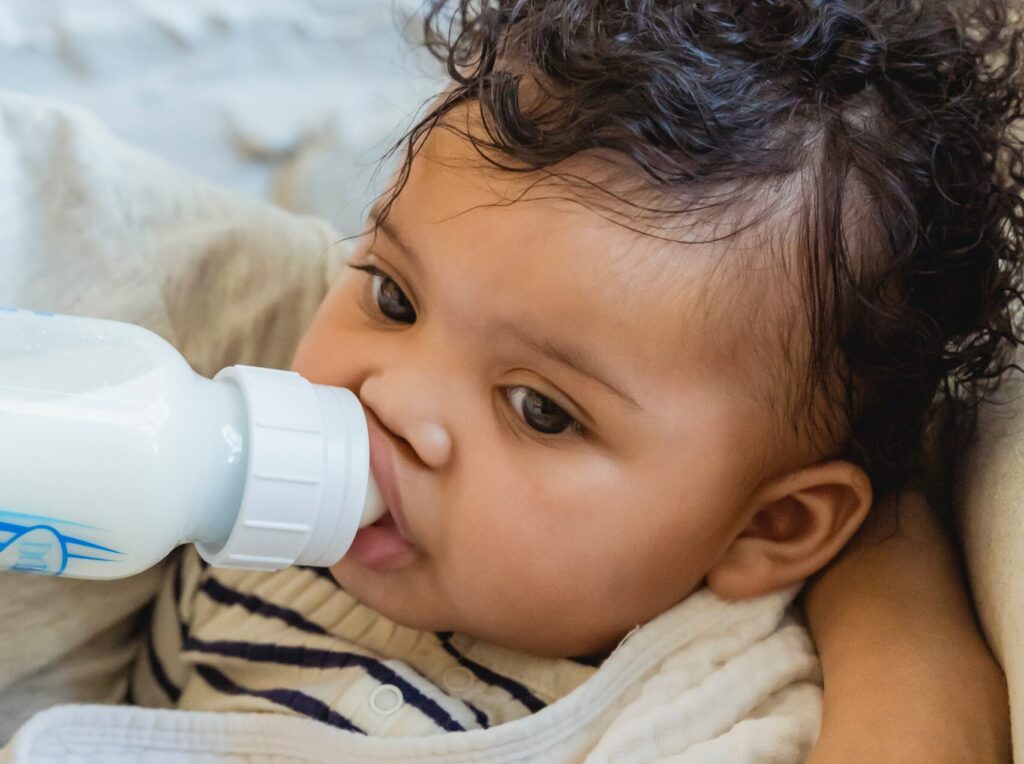When it comes to baby formula, the options available at most large supermarkets can be overwhelming. From soy to whole milk, hypoallergenic to low sodium, the variety seems endless. So, how do you navigate this sea of choices and select the right baby formula for your little one? Understanding the basics can be a helpful starting point.
Baby Formula Basics: 3 Forms to Consider
While breast milk provides optimal nutrition for newborns, not every mother can or chooses to breastfeed exclusively. Supplementing with infant formula becomes a practical alternative in such cases, especially when the mother returns to work or when others are involved in feeding the baby.
Commercially prepared baby formulas are regulated by the FDA to ensure they provide all the necessary nutrients for babies. Theformulas mainly come in 3 forms:
1.Powders: This is the most cost-effective option, as it involves mixing the powder with water at a ratio of one scoop to two ounces of water.
2.Liquid concentrates: These formulas are slightly pricier than powders and need to be diluted with an equal part of water.
3.Ready-to-use formulas: Although they are the most expensive, ready-to-use formulas offer convenience as they can be poured directly into the baby’s bottle.
Understanding the Ingredients: What's in Baby Formula?

The three different forms of baby formula—powders, concentrates, and ready-to-use—contain varying ingredients:
1.Milk based formulas for babies: These formulas recommended by the American Academy of Pediatrics. these are made with cow’s milk, vegetable oils for fat calories, vitamins, minerals, and are usually iron-fortified, as Milk-based formulas are suitable for healthy, full-term babies.
2.Soy-based baby formulas: Made with soy protein, vegetable oils, corn syrup, and/or sucrose for carbohydrates, and sometimes iron, these formulas are ideal for babies with lactose intolerance, allergies to cow’s milk protein, or those following a vegetarian-based diet. It’s important to note that soy infant formulas are not recommended for low-birth-weight or preterm babies. Additionally, there may be some cross-reactivity between soy and milk formulas, especially if the baby is allergic to milk-based formulas.
3.Specialty baby formulas: This category encompasses a range of products designed for specific needs. It includes formulas for low-birth-weight babies, low-sodium formulas for those requiring restricted salt intake, and formulas thickened with rice starch for babies with reflux. “Predigested” or hydrolyzed protein formulas are available for babies who can’t tolerate or have allergies to the whole proteins in cow’s milk and milk-based formulas. There are also formulas tailored for babies with medical conditions that affect their ability to process certain proteins or fats.
Enriched formulas with DHA and ARA omega fatty acids, derived from algae, have gained popularity due to their potential benefits in brain, nerve development, and vision improvement. Some formulas may also contain probiotics, the beneficial bacteria found in certain yogurts, or prebiotics, which support the growth of good bacteria in the baby’s gut.
Choosing the Right Formula for Your Baby
Given the multitude of options, how can you determine the best formula for your child? Start by consulting your baby’s pediatrician, who can provide recommendations based on your baby’s specific needs. Additionally, many moms receive free samples of baby formula or coupons from the hospital, which can allow you to try different formulas before making a decision.
It’s important to note that all formulas produced in the United States meet stringent FDA guidelines for nutrition, ensuring your infant’s well-being. Regardless of the formula you choose, remember to check the expiration date and avoid purchasing damaged cans or bottles.
Switching Formulas and Follow-Up Options
There may be instances where you need to switch the formula your baby is consuming. Reasons for switching can include food allergies, increased iron requirements, extreme fussiness, or diarrhea. However, it’s crucial to consult your baby’s doctor before making any changes, as these symptoms may also indicate issues unrelated to the formula. Changing formulas without professional guidance may not help or could worsen your baby’s symptoms.
When your baby reaches 4 to 12 months old, you might consider transitioning to follow-up formulas. These formulas have higher calorie and nutrient content compared to regular infant formulas. However, it’s essential to consult your pediatrician before introducing follow-up formulas to ensure they are suitable for your baby’s needs.
Safety Considerations
In 2008, concerns about melamine, a synthetic chemical used in various products, including fertilizers and cleaning agents, arose in relation to some baby formulas. However, if you are using formula made in the United States, there is no cause for concern. The FDA strictly prohibits the use of melamine as a food ingredient in the United States, eliminating the risk of it being present in domestically manufactured baby formulas. For the latest information on melamine and food product safety, visit the FDA website.
12 Tips for Using Baby Formula
To ensure safe and effective feeding with baby formula, here are some quick tips to keep in mind:
Feeding:
1.Allow your newborn to consume as much formula as they desire, but avoid forcing them to finish a bottle if they show disinterest. Typically, newborns consume around 2 to 3 ounces every 2-3 hours.
2.Follow the instructions on the formula packaging to determine the precise amount of water to mix with concentrates and powders. Insufficient water can lead to diarrhea and dehydration.
3.Avoid diluting infant formula or breast milk to stretch your budget. This practice can result in inadequate nutrient intake for the baby and may pose the risk of “water intoxication,” disturbing the electrolyte balance and potentially causing seizures or brain damage. If you cannot afford baby formula, consider reaching out to food pantries, social service agencies, or county health departments for assistance.
4.If your baby experiences persistent spitting up, try feeding them a slightly smaller quantity of formula at a slower pace. Keeping the baby upright after feeding and limiting active playtime immediately after can also help.
5.Do not introduce cow’s milk to a baby younger than 1 year old. The proteins in cow’s milk infant formulas are processed or cooked, making them easier for babies to digest compared to regular cow’s milk.
6.If your 1-year-old enjoys milk, provide them with whole milk rather than reduced-fat or nonfat options. Whole milk contains the necessary fats and calories for a growing toddler.
Safety:
7.Avoid heating your baby’s bottle in the microwave, as microwaves heat unevenly and can create hot spots that may burn the baby’s mouth. Instead, warm the bottle by placing it in a mug of warm water heated in the microwave for a minute or two. Alternatively, you can warm the bottle under a warm tap, ensuring the temperature is lukewarm before offering it to your baby. Always check the temperature using your skin to avoid burns.
8.Use tap water if it is safe, or opt for bottled water if you are uncertain about the quality. Another option is boiling water for at least a minute and allowing it to cool before using it to prepare the formula.
9.Before using new baby bottles and nipples, sterilize them by boiling them in water for 5 minutes. The nipples may change color, but they are still safe to use. Afterward, you can wash bottles, nipples, and caps in the dishwasher or by hand using a bottle and nipple brush, ensuring you rinse them thoroughly.
10.Prior to preparing the baby formula, wash your hands thoroughly with soap and warm water. Clean and sanitize the preparation area and any utensils used in the formula preparation.
11.Follow the storage instructions provided on the formula packaging. Typically, prepared formula can be stored in the refrigerator for up to 24 hours. If you are traveling or unable to refrigerate the formula, use an insulated cooler bag with ice packs to keep it cold.
12.Regularly check for recalls or safety alerts related to the specific brand of baby formula you are using. Stay informed about any potential issues to ensure your baby’s safety.
Dear parents remember one thing, every baby is unique, what works for one may not work for another. It’s important to monitor your baby’s growth and development and consult with their pediatrician regularly to ensure they are receiving the appropriate nutrition.




